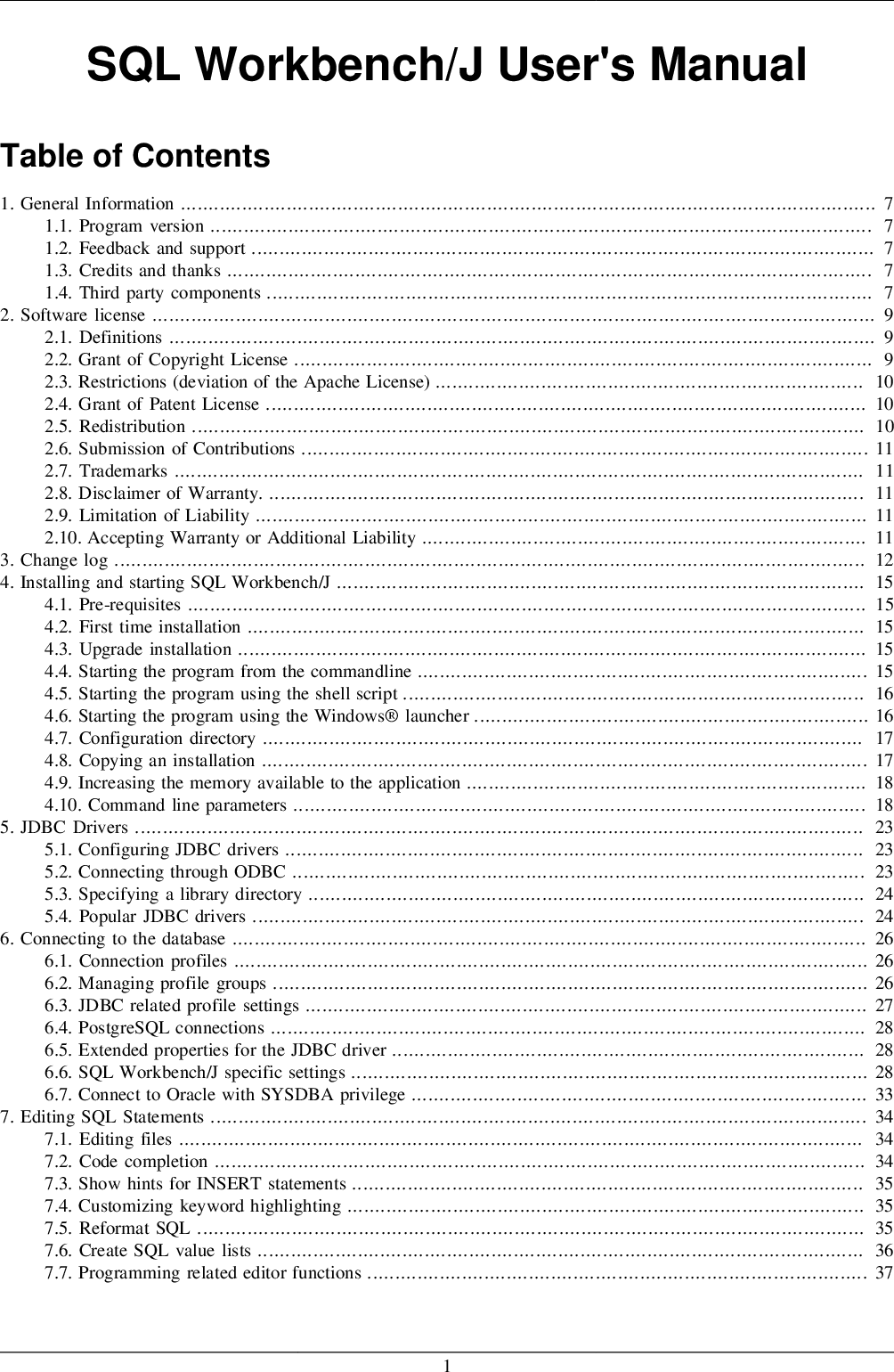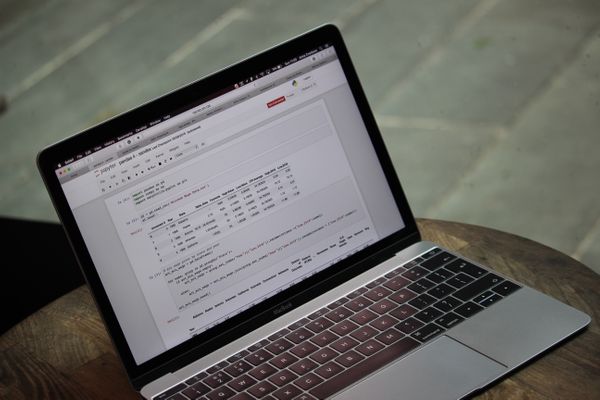At a high level, the process of aggregating data can be described as applying a function to a number of rows to create a smaller subset of rows. In practice, this often looks like a calculation of the total count of the number of rows in a dataset, or a calculation of the sum of all of the rows in a particular column. For a more comprehensive explanation of the basics of SQL aggregate functions, check out the aggregate functions module in Mode's SQL School. We can group the resultset in SQL on multiple column values.
All the column values defined as grouping criteria should match with other records column values to group them to a single record. Let us use the aggregate functions in the group by clause with multiple columns. This means given for the expert named Payal, two different records will be retrieved as there are two different values for session count in the table educba_learning that are 750 and 950.
In this article, I will explain how to use groupby() and sum() functions together with examples. Group by is done for clubbing together the records that have the same values for the criteria that are defined for grouping. Grouping on multiple columns is most often used for generating queries for reports, dashboarding, etc.
Oftentimes, you're gonna want more than just concatenate the text. By passing a list of functions, you can actually set multiple aggregations for one column. In the next line of code I count the amount of rows per ID. As an example, we are going to use the output of the SQL query named Python as an input to our Dataframe in our Python notebook. Note that this Dataframe does not have any of the aggregation functions being calculated via SQL. It's simply using SQL to select the required fields for our analysis, and we'll use pandas to do the rest.
An added benefit of conducting this operation in Python is that the workload is moved out of the data warehouse. Pandas comes with a whole host of sql-like aggregation functions you can apply when grouping on one or more columns. This is Python's closest equivalent to dplyr's group_by + summarise logic.
Here's a quick example of how to group on one or multiple columns and summarise data with aggregation functions using Pandas. Now to convert the data type of 2 columns i.e. 'Age' & 'Marks' from int64 to float64 & string respectively, we can pass a dictionary to the Dataframe.astype(). This dictionary contains the column names as keys and thier new data types as values i.e. Let us check the column names of the resulting dataframe.
Each tuple gives us the original column name and the name of aggregation operation we did. Learn about pandas groupby aggregate function and how to It allows you to split your data into separate groups to perform computations for better analysis. We can even rename the aggregated columns to improve their the GroupBy function is and how useful it can be for analyzing your data. Pandas groupby is a function you can utilize on dataframes to split the object After forming your groups you can run one or many aggregations on the grouped data.
This method will apply your aggregations to all numeric columns within your group dataframe as shown in example one below Vlad Alex Merzmensch. This is how we can change the data type of a single column in dataframe. Now let's see how to change types of multiple columns in a single line. You can pass various types of syntax inside the argument for the agg() method. I chose a dictionary because that syntax will be helpful when we want to apply aggregate methods to multiple columns later on in this tutorial.
The agg() method allows us to specify multiple functions to apply to each column. Below, I group by the sex column and then we'll apply multiple aggregate methods to the total_bill column. Inside the agg() method, I pass a dictionary and specify total_bill as the key and a list of aggregate methods as the value.
To apply more than one aggregation when using pandas GroupBy, you simply pass in a dictionary to the .agg function. In your dictionary, your key will be the column name and the value will be a list of operations you want to perform on the column. At this point, we've fully replicated the output of our original SQL query while offloading the grouping and aggregation work to pandas. Again, this example only scratches the surface of what is possible using pandas grouping functionality. Many group-based operations that are complex using SQL are optimized within the pandas framework. This includes things like dataset transformations, quantile and bucket analysis, group-wise linear regression, and application of user-defined functions, amongst others.
Access to these types of operations significantly widens the spectrum of questions we're capable of answering. One of the most basic analysis functions is grouping and aggregating data. In some cases, this level of analysis may be sufficient to answer business questions. In other instances, this activity might be the first step in a more complex data science analysis. In pandas, the groupbyfunction can be combined with one or more aggregation functions to quickly and easily summarize data.
This concept is deceptively simple and most new pandas users will understand this concept. However, they might be surprised at how useful complex aggregation functions can be for supporting sophisticated analysis. In this article we will discuss how to change the data type of a single column or multiple columns of a Dataframe in Python. Now the simple dataframe is ready for further downstream analysis. One nagging issue is that using mean() function on grouped dataframe has the same column names. Although now we have mean values of the three columns.
Another option is to use Pandas agg() function instead of mean(). For example, in our dataset, I want to group by the sex column and then across the total_bill column, find the mean bill size. Applying the groupby() method to our Dataframe object returns a GroupBy object, which is then assigned to the grouped_single variable. An important thing to note about a pandas GroupBy object is that no splitting of the Dataframe has taken place at the point of creating the object.
The GroupBy object simply has all of the information it needs about the nature of the grouping. No aggregation will take place until we explicitly call an aggregation function on the GroupBy object. You can also send a list of columns you wanted group to groupby() method, using this you can apply a group by on multiple columns and calculate a sum over each combination group. For example, df.groupby(['Courses','Duration'])['Fee'].sum() does group on Courses and Duration column and finally calculates the sum. Groupby & sum on single & multiple columns is accomplished by multiple ways in pandas, some among them are groupby(), pivot(), transform(), and aggregate() functions. Instructions for aggregation are provided in the form of a python dictionary or list.
The dictionary keys are used to specify the columns upon which you'd like to perform operations, and the dictionary values to specify the function to run. In the above example, we computed summarized values for multiple columns. Typically, one might be interested in summary value of a single column, and making some visualization using the index variables.
Let us take the approach that is similar to above example using agg() function. When we perform groupby() operation with multiple variables, we get a dataframe with multiple indices as shown below. We have two indices followed by three columns with average values, but with the original column names. In pandas, you can select multiple columns by their name, but the column name gets stored as a list of the list that means a dictionary. It means you should use [ ] to pass the selected name of columns.
Here we selected the columns that we wanted to compute the minimum on from the resulting groupby object and then applied the min() function. We already know that the minimum "MPG" is smaller for company "B". Here we additionally find that the minimum "EngineSize" is smaller for company "A". You can use Pandas groupby to group the underlying data on one or more columns and estimate useful statistics likecount, mean,median, min, max etc. In this tutorial, we will look at how to get the minimum value for each group in pandas groupby with the help of some examples. The having clause allows users to filter the values returned from a grouped query based on the results of aggregation functions.
Mode's SQL School offers more detail about the basics of the having clause. What if we want to filter the values returned from this query strictly to start station and end station combinations with more than 1,000 trips? Since the SQL where clause only supports filtering records and not results of aggregation functions, we'll need to find another way. At a high level, the SQL group by clause allows you to independently apply aggregation functions to distinct groups of data within a dataset. Our SQL School further explains the basics of the group by clause. The pandas standard aggregation functions and pre-built functions from the python ecosystem will meet many of your analysis needs.
However, you will likely want to create your own custom aggregation functions. There are four methods for creating your own functions. One area that needs to be discussed is that there are multiple ways to call an aggregation function. As shown above, you may pass a list of functions to apply to one or more columns of data. In the context of this article, an aggregation function is one which takes multiple individual values and returns a summary. In the majority of the cases, this summary is a single value.
Notice that I have used different aggregation functions for different features by passing them in a dictionary with the corresponding operation to be performed. This allowed me to group and apply computations on nominal and numeric features simultaneously. Percentage of a column in pandas python is carried out using sum function in. Let's see how to Get the percentage of a column in pandas dataframe example. Both SQL and Pandas allow grouping based on multiple columns which may Both Pandas and SQL provide ways to apply different aggregate functions to different columns.
In this article, you have learned to GroupBy and sum from pandas DataFrame using groupby(), pivot(), transform(), and aggregate() function. Also, you have learned to Pandas groupby() & sum() on multiple columns. P andas' groupby is undoubtedly one of the most powerful functionalities that Pandas brings to the table. This is one of my favourite uses of the value_counts() function and an underutilized one too.
For example, you may have a data frame with data for each year as columns and you might want to get a new column which summarizes multiple columns. Stacking a dataframe at level 1 will stack maths and science columns row wise Selecting columns using "select_dtypes" and "filter" methods. When more than one column header is present we can stack the specific column header by specified the level.
The output from a groupby and aggregation operation varies between Pandas Series and Pandas Dataframes, which can be confusing for new users. As a rule of thumb, if you calculate more than one column of results, your result will be a Dataframe. For a single column of results, the agg function, by default, will produce a Series. One aspect that I've recently been exploring is the task of grouping large data frames by different variables, and applying summary functions on each group.
This is accomplished in Pandas using the "groupby()" and "agg()" functions of Panda's DataFrame objects. As default value of copy argument in Dataframe.astype() was True. Therefore, it returns a copy of passed Dataframe with changed data types of given columns.
To change the data type of multiple columns in the dataframe we are going to use DataFrame.astype(). For example, the species.csv file that we've been working with is a lookup table. This table contains the genus, species and taxa code for 55 species. These species are identified in our survey data as well using the unique species code. Rather than adding 3 more columns for the genus, species and taxa to each of the 35,549 line Survey data table, we can maintain the shorter table with the species information. When we want to access that information, we can create a query that joins the additional columns of information to the Survey data.
How To Group By More Than One Column We accomplish this by first creating a dataframe to add back on without the aggregation column (`drop`), and with the grouping column as the index. Next, after joining this new dataframe on, we pull the grouping column out of the index, remove any duplicate names, and clean up the index so it is sequential. We can also group by multiple columns and apply an aggregate method on a different column.
Below I group by people's gender and day of the week and find the total sum of those groups' bills. Below, I group by the sex column and apply a lambda expression to the total_bill column. The expression is to find the range of total_bill values. The range is the maximum value subtracted by the minimum value. I also rename the single column returned on output so it's understandable.
Most examples in this tutorial involve using simple aggregate methods like calculating the mean, sum or a count. However, with group bys, we have flexibility to apply custom lambda functions. We can also get the minimum values for more than one columns at a time for each group resulting from groupby.
For example, let's get the minimum value of mileage "MPG" and "EngineSize" for each "Company" in the dataframe df. In this article, I share a technique for computing ad-hoc aggregations that can involve multiple columns. This technique is easy to use and adapt for your needs, and results in code that's straight forward to interpret. The tuple approach is limited by only being able to apply one aggregation at a time to a specific column. If I need to rename columns, then I will use the renamefunction after the aggregations are complete. In some specific instances, the list approach is a useful shortcut.
I will reiterate though, that I think the dictionary approach provides the most robust approach for the majority of situations. The most common aggregation functions are a simple average or summation of values. As of pandas 0.20, you may call an aggregation function on one or more columns of a DataFrame. This article will quickly summarize the basic pandas aggregation functions and show examples of more complex custom aggregations. Whether you are a new or more experienced pandas user, I think you will learn a few things from this article.




























No comments:
Post a Comment
Note: Only a member of this blog may post a comment.